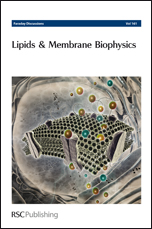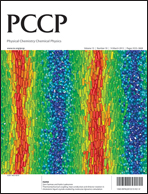
Call for oral abstracts – deadline 22 July 2013

We invite you to join us for Molecular Simulations and Visualization: Faraday Discussion 169, which will cover:
- virtual and augmented reality; immersive molecular simulations
- advanced visualization and visual analytics
- computing power revolution and new algorithms: GP-GPUs, clouds and more
- applications and serious games: from molecular docking to protein folding
Speakers include:
- Helmut Grubmüller, Max Planck Institute for Biophysical Chemistry, Germany
- Graham Johnson, University of California, San Francisco, USA
- David Glowacki, University of Bristol, UK
- Valerie Daggett, University of Washington, USA
- Thomas Ertl, University of Stuttgart, Germany
- Vijay Pande, Stanford University, USA
- John Stone, University of Illinois at Urbana-Champaign, USA
- Melanie Stegman, Federation of American Scientists, USA
- Jim Zheng, Medical University of South Carolina, USA
- Frederick Brooks, University of North Carolina at Chapel Hill, USA
- Thomas DeFanti, University of California, San Diego, USA
 Faraday Discussions are a long-established series of meetings which provide a unique international platform for the exchange of views and newly acquired results in developing areas of physical chemistry, biophysical chemistry and chemical physics.
Faraday Discussions are a long-established series of meetings which provide a unique international platform for the exchange of views and newly acquired results in developing areas of physical chemistry, biophysical chemistry and chemical physics.
All the presented papers and the discussion, including new research presented by any delegate, are published together in the Faraday Discussion volume. The latest Impact Factor is 5.0.
 Physical Chemistry Chemical Physics (PCCP) is a sister journal to Faraday Discussions. PCCP brings you content of the highest quality in physical chemistry, chemical physics and biophysical chemistry.
Physical Chemistry Chemical Physics (PCCP) is a sister journal to Faraday Discussions. PCCP brings you content of the highest quality in physical chemistry, chemical physics and biophysical chemistry.
We invite you to submit your research to PCCP today.
Recent articles from PCCP in this area include:
Anisotropy of the water–carbon interaction: molecular simulations of water in low-diameter carbon nanotubes
Guillermo Pérez-Hernández and Burkhard Schmidt
DOI: 10.1039/C3CP44278K
Molecular simulations of green leaf volatiles and atmospheric oxidants on air/water interfaces
Thilanga P. Liyana-Arachchi, Christopher Stevens, Amie K. Hansel, Franz S. Ehrenhauser, Kalliat T. Valsaraj and Francisco R. Hung
DOI: 10.1039/C3CP44090G
Molecular simulation and experimental studies of a mesoporous ZSM-5 type molecular sieve
Baoyu Liu, Yongbiao Wu, Defei Liu, Ying Wu, Hongxia Xi and Yu Qian
DOI: 10.1039/C2CP43900J
Modeling environment effects on spectroscopies through QM/classical models
Benedetta Mennucci
DOI: 10.1039/C3CP44417A
Microsecond folding experiments and simulations: a match is made
M. B. Prigozhin and M. Gruebele
DOI: 10.1039/C3CP43992E
Professor Dr Marc Baaden and the rest of the Scientific Committee look forward to welcoming you and your colleagues to Nottingham in May 2014 for Molecular Simulations and Visualization: Faraday Discussion 169.
 Robert Hillman and co-workers describe their new technique that allows latent fingerprints on metal surfaces to be visualised, even after the culprit has tried to wipe them away, in their recent Faraday Discussion paper, which was presented at Faraday 164 in Durham, UK.
Robert Hillman and co-workers describe their new technique that allows latent fingerprints on metal surfaces to be visualised, even after the culprit has tried to wipe them away, in their recent Faraday Discussion paper, which was presented at Faraday 164 in Durham, UK.

















